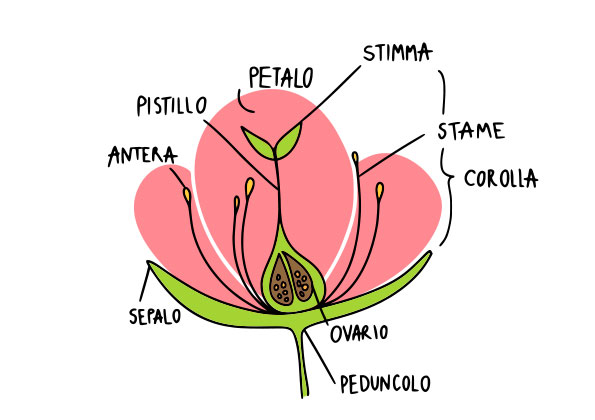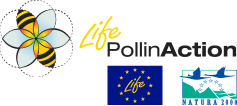Life PollinAction
The importance of pollination
Pollination by animals is an ecosystem service of great value to humanity, both economically and ecologically. Without pollinators, humans would not survive, and terrestrial ecosystems would collapse. In the absence of animal pollination, 85% of flowering plants could not reproduce sexually. Many of these are cultivated species that are essential for human dietary requirements. Of the 115 most commonly grown crops in the world, 75% rely on animal pollination and account for 35% of global crop yields. For this reason, it is sometimes necessary to resort to direct human intervention (artificial pollination) in intensive crops where pollination is scarce. However, the disappearance of animal pollination would also have a severe impact on the production of fodder necessary for feeding domestic animals that provide meat, milk, eggs, etc.
There is another aspect that makes animal-mediated pollination a crucial process. It concerns its role in the diversification of flowering plants and animals (especially insects). The loss of this process could lead to the disappearance of a key factor in the evolutionary history of plant and animal species, probably one of the most important factors in the diversification of tens of thousands of species.
Pollination and pollinators
Pollination is the process of transferring pollen grains from the male part of a plant (in flowers these are the “stamens”) to the female part of the plant (in flowers the pistil). The pollen contains the male gametes, while the ovary contains the female gametes.

The goal of every living organism, including plants, is to produce offspring for the next generation. One of the ways plants can generate offspring is by producing seeds. Pollination ensures that the fertilisation process and subsequent seed formation can take place. Whether by abiotic factors such as wind and water or by animals, pollination is therefore a critical event in the reproduction of most plant species, crucial for their reproductive success and for their enduring existence in a location.
Overall, 85% of flowering plants entrust their pollination to animals and 65% to insects in particular: The production of “reward substances” such as pollen and nectar and the development of attractive floral structures have enabled the establishment of mutualistic relationships between plant species and pollinators. For the former, pollination is ensured, while the pollinating insects have access to nutrients essential for their survival.
How does the pollination happen
There are two types of pollination:
- self-pollination or autogamous pollination, when the pollen fertilises the female gametes that are produced in the same flower;
- cross-pollination or heterogamous pollination, when the pollen produced by one plant fertilises the female gametes in the flowers of another plant.
In this second case, the transport of pollen between different plants can take place in different ways depending on the species.
About 15% of plants, especially grasses, most conifers, and some trees such as oaks and maples, are pollinated by abiotic agents:
- by wind (anemophily or wind pollination);
- by water (hydrophily of water pollination);
- The remaining 85% are pollinated by biotic agents:
- by vertebrates belonging to very different groups of organisms: birds, bats, reptiles, etc. (zoophily or animal pollination);
- by insects (entomophily or insect pollination).
When this is the case, plants are adapted to encourage the specific pollinators they need. Pollinators do not visit the flowers with the altruistic aim of performing the pollination service. They’re usually gathering nectar and/or pollen. In doing this, they get covered in pollen grains and then transport the pollen from one plant to another. Through their actions, they help the plant to reproduce. Thus, both the plant and insect benefit from their mutual relationship.

